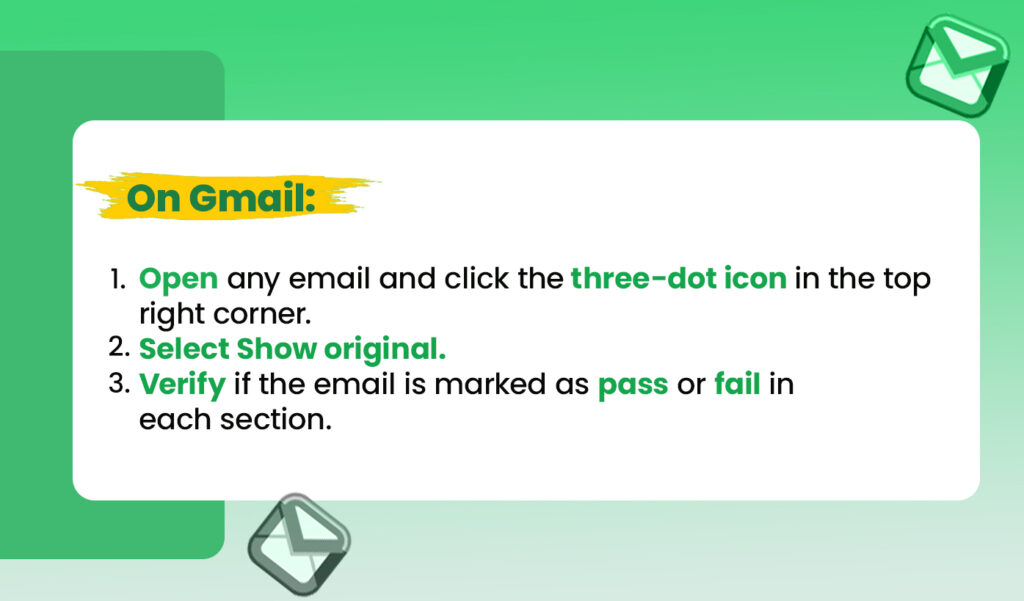
How Email Spoofing Threatens Your Security and Privacy
December 3,2024
6 mins
How Email Spoofing Threatens Your Security and Privacy
Imagine this: Emma, a busy professional, gets an email from her bank with an urgent subject line—“Verify Your Account Details Immediately!” Panicking, she clicks on the link, redirects on a page that looks identical to her bank’s website, and quickly enters her vital data. Moments later, she realizes her bank account has been drained.Emma just fell victim to an email phishing scam that was skillfully created to mimic the original email using email spoofing, a technique where attackers disguise malicious emails to appear real.
What’s worse?
These scams are common, targeting individuals and businesses with damaging consequences for data privacy.
This blog illuminates how email spoofing works, why it’s so scary, and, most significantly, how you may defend yourself from turning into the next Emma. Stay with us—it’s time to take care of your inbox and guard your virtual life from lurking cyber threats.
So, without further ado, let’s dive deep into the blog.
Happy reading!
What is Email Spoofing?
Email spoofing is nothing but digitally impersonating. Attackers can control email headers so that messages seem to come from a legitimate sender–like your bank, place of work, or a trusted contact.
Their aim?
To trick you into revealing vital personal information or clicking on malicious links.
Besides, Proofpoint’s 2023 study explores that 75% of organizations globally suffered at least one email spoofing attack last year, voicing the urgency of strong email security and privacy.
How Does Email Spoofing Work?
Email spoofing primarily works by imitating trusted organizations and making fake emails act like the real ones. Hackers then change the email header metadata like senders address, subject line, and message and send them to users.
Let’s have a look at how they actually work:
- Fake Sender ID: Scammers mold the sender address in the “From” field.
- Convincing Content: They create emails that imitate actual organizations, using emblems, a professional tone, and original content.
- Delivery: These emails skip easy filters and reach your inbox, preying on unsuspecting users.
Related Read: 8 Essential Tips to Protect Yourself from a Email Hack
Reasons for Email Spoofing
Scammers use email spoofing to deceive email receivers into thinking the email they received is from an authentic corporation, ultimately redirecting them to a malicious site.
The below-mentioned points are causing email spoofing:
- Phishing Scams: Extract sensitive private information like login credentials or credit card details.
- Spread Malware: Trick customers into downloading harmful attachments.
- Reputation Damage: Damage the reputations of organizations by associating them with scams.
- Detour Email Filters: By following and mimicking legitimate and reputable organizations, spoofed emails prefer to avoid email spam filters.
Read More: Top 9 Best Practices to Strengthen Your CyberSecurity
How to Spot Spoofed Emails
So, how can you spot spoofed emails?
Well, the first thing is to check the grammar and spelling irregularities, the sender’s address, and other details.
Check the below points:
#1 Check the Sender’s Email Address
A legitimate email could read support@bank.com, but a spoofed model may be support@b4nk.Com. So, be keen on small details.
#2 Verify Security Protocols
Thankfully, popular email providers keep security frameworks, such as SPF (Sender Policy Framework), DKIM (DomainKeys Identified Mail), and DMARC (Domain-Based Message Authentication, Reporting, and Conformance to identify spoofed emails. So, you must check the authentication results to verify whether the email is safe.
This is how you do it:
- On Gmail:
Check the email header by clicking “Show Original.” Look for the “SPF” or “DKIM” pass status. Follow the steps:
- Open any email and click the three-dot icon in the top right corner.
- Select Show original.
- Verify if the email is marked as pass or fail in each section.
- On Yahoo:
Open the e-mail, click the three dots in the corner, and select “View Raw Message.” Follow these steps:
- Open any email and click the three-dot icon in the top right corner.
- Select View raw message.
- Scroll down to the details and see Authentic-Results to check if each section’s email is marked as pass or fail.
- On Outlook:
Right-click on the email, pick “View Source,” and verify the sender’s IP or domain authenticity. Follow these steps:
1. Open any email and click the three-dot icon in the top right corner.
2. Hover over View and then select View message details.
3. Scroll down to the details and see Authentic-Results to check if each section’s email is marked as pass or fail.
#3 Inspect Suspicious Links
Hover over links without clicking. If the link redirects to an unrelated area, it’s likely a scam.
#4 Poor Grammar and Urgency
Spoofed emails regularly contain grammatical errors and create urgency, with titles such as “Act Now!” or “Your Account Will Be Closed.”
| Say Goodbye to Spoofing and Hello to Peace of Mind!
Get AVP Suite Total Security now and fortify your defenses against phishing scams and malware threats.
|
How to Protect Against Email Spoofing
- Enable Email Security Protocols
-
- Leverage tools like SPF (Sender Policy Framework), DKIM (DomainKeys Identified Mail), and DMARC (Domain-Based Message Authentication, Reporting, and Conformance) to authenticate emails.
- Avoid Clicking on Suspicious Links
- Always confirm the source authenticity before interacting with any embedded hyperlinks.
- Report Suspicious Emails
- Notify your email service company to block the sender.
- Regular Software Updates
- Keep your devices and antivirus software up to date to eliminate cyber security vulnerabilities.
Also Read: What Personal Data Are Companies Tracking and How Can You Stay Safe?
How AVP Suite Can Keep Your Email Secure
AVP Suite Antivirus Software presents state-of-the-art features to shield you from email spoofing.
This is how they protect your inbox:
- AVP Email Spam Score: It quickly identifies and blocks phishing and spoofing attempts by checking the sender and content authenticity and originality.
- Real-Time Threat Detection: Sends you alerts about malware embedded in emails.
- Email Encryption: Ensures the privacy and safety of your communications.
- Phishing Scam Protection: Offers superior filters to refrain junk phishing emails from getting into your inbox.
Final Thoughts
Email spoofing isn’t just a subtle and ignoring thing—it severely threatens your online data security. By staying vigilant, using strong security tools like AVP Suite, and staying updated about scams, you can guard your inbox and private information from falling into the wrong hands.
Imagine this: Emma, a busy professional, gets an email from her bank with an urgent subject line—“Verify Your Account Details Immediately!” Panicking, she clicks on the link, redirects on a page that looks identical to her bank’s website, and quickly enters her vital data. Moments later, she realizes her bank account has been drained.
Emma just fell victim to an email phishing scam that was skillfully created to mimic the original email using email spoofing, a technique where attackers disguise malicious emails to appear real.
What’s worse?
These scams are common, targeting individuals and businesses with damaging consequences for data privacy.
This blog illuminates how email spoofing works, why it’s so scary, and, most significantly, how you may defend yourself from turning into the next Emma. Stay with us—it’s time to take care of your inbox and guard your virtual life from lurking cyber threats.
So, without further ado, let’s dive deep into the blog.
Happy reading!
What is Email Spoofing?
Email spoofing is nothing but digitally impersonating. Attackers can control email headers so that messages seem to come from a legitimate sender–like your bank, place of work, or a trusted contact.
Their aim?
To trick you into revealing vital personal information or clicking on malicious links.
Besides, Proofpoint’s 2023 study explores that 75% of organizations globally suffered at least one email spoofing attack last year, voicing the urgency of strong email security and privacy.
How Does Email Spoofing Work?
Email spoofing primarily works by imitating trusted organizations and making fake emails act like the real ones. Hackers then change the email header metadata like senders address, subject line, and message and send them to users.
Let’s have a look at how they actually work:
- Fake Sender ID: Scammers mold the sender address in the “From” field.
- Convincing Content: They create emails that imitate actual organizations, using emblems, a professional tone, and original content.
- Delivery: These emails skip easy filters and reach your inbox, preying on unsuspecting users.
Related Read: 8 Essential Tips to Protect Yourself from a Email Hack
Reasons for Email Spoofing
Scammers use email spoofing to deceive email receivers into thinking the email they received is from an authentic corporation, ultimately redirecting them to a malicious site.
The below-mentioned points are causing email spoofing:
- Phishing Scams: Extract sensitive private information like login credentials or credit card details.
- Spread Malware: Trick customers into downloading harmful attachments.
- Reputation Damage: Damage the reputations of organizations by associating them with scams.
- Detour Email Filters: By following and mimicking legitimate and reputable organizations, spoofed emails prefer to avoid email spam filters.
Read More: Top 9 Best Practices to Strengthen Your CyberSecurity
How to Spot Spoofed Emails

So, how can you spot spoofed emails?
Well, the first thing is to check the grammar and spelling irregularities, the sender’s address, and other details.
Check the below points:
#1 Check the Sender’s Email Address
A legitimate email could read support@bank.com, but a spoofed model may be support@b4nk.Com. So, be keen on small details.
#2 Verify Security Protocols
Thankfully, popular email providers keep security frameworks, such as SPF (Sender Policy Framework), DKIM (DomainKeys Identified Mail), and DMARC (Domain-Based Message Authentication, Reporting, and Conformance to identify spoofed emails. So, you must check the authentication results to verify whether the email is safe.
This is how you do it:
- On Gmail:
Check the email header by clicking “Show Original.” Look for the “SPF” or “DKIM” pass status. Follow the steps:

- On Yahoo:
Open the e-mail, click the three dots in the corner, and select “View Raw Message.” Follow these steps:

- On Outlook:
Right-click on the email, pick “View Source,” and verify the sender’s IP or domain authenticity. Follow these steps:

#3 Inspect Suspicious Links
Hover over links without clicking. If the link redirects to an unrelated area, it’s likely a scam.
#4 Poor Grammar and Urgency
Spoofed emails regularly contain grammatical errors and create urgency, with titles such as “Act Now!” or “Your Account Will Be Closed.”
Say Goodbye to Spoofing and Hello to Peace of Mind!
Get AVP Suite Total Security now and fortify your defenses against phishing scams and malware threats.
Try AVP Suite for Free!
How to Protect Against Email Spoofing
- Enable Email Security Protocols
- Leverage tools like SPF (Sender Policy Framework), DKIM (DomainKeys Identified Mail), and DMARC (Domain-Based Message Authentication, Reporting, and Conformance) to authenticate emails.
- Avoid Clicking on Suspicious Links
- Always confirm the source authenticity before interacting with any embedded hyperlinks.
- Report Suspicious Emails
- Notify your email service company to block the sender.
- Regular Software Updates
- Keep your devices and antivirus software up to date to eliminate cyber security vulnerabilities.
Also Read: What Personal Data Are Companies Tracking and How Can You Stay Safe?
How AVP Suite Can Keep Your Email Secure
AVP Suite Antivirus Software presents state-of-the-art features to shield you from email spoofing.
This is how they protect your inbox:
- AVP Email Spam Score: It quickly identifies and blocks phishing and spoofing attempts by checking the sender and content authenticity and originality.
- Real-Time Threat Detection: Sends you alerts about malware embedded in emails.
- Email Encryption: Ensures the privacy and safety of your communications.
- Phishing Scam Protection: Offers superior filters to refrain junk phishing emails from getting into your inbox.
Final Thoughts
Email spoofing isn’t just a subtle and ignoring thing—it severely threatens your online data security. By staying vigilant, using strong security tools like AVP Suite, and staying updated about scams, you can guard your inbox and private information from falling into the wrong hands.
Secure your digital life now using AVP Suite
Secure Now





